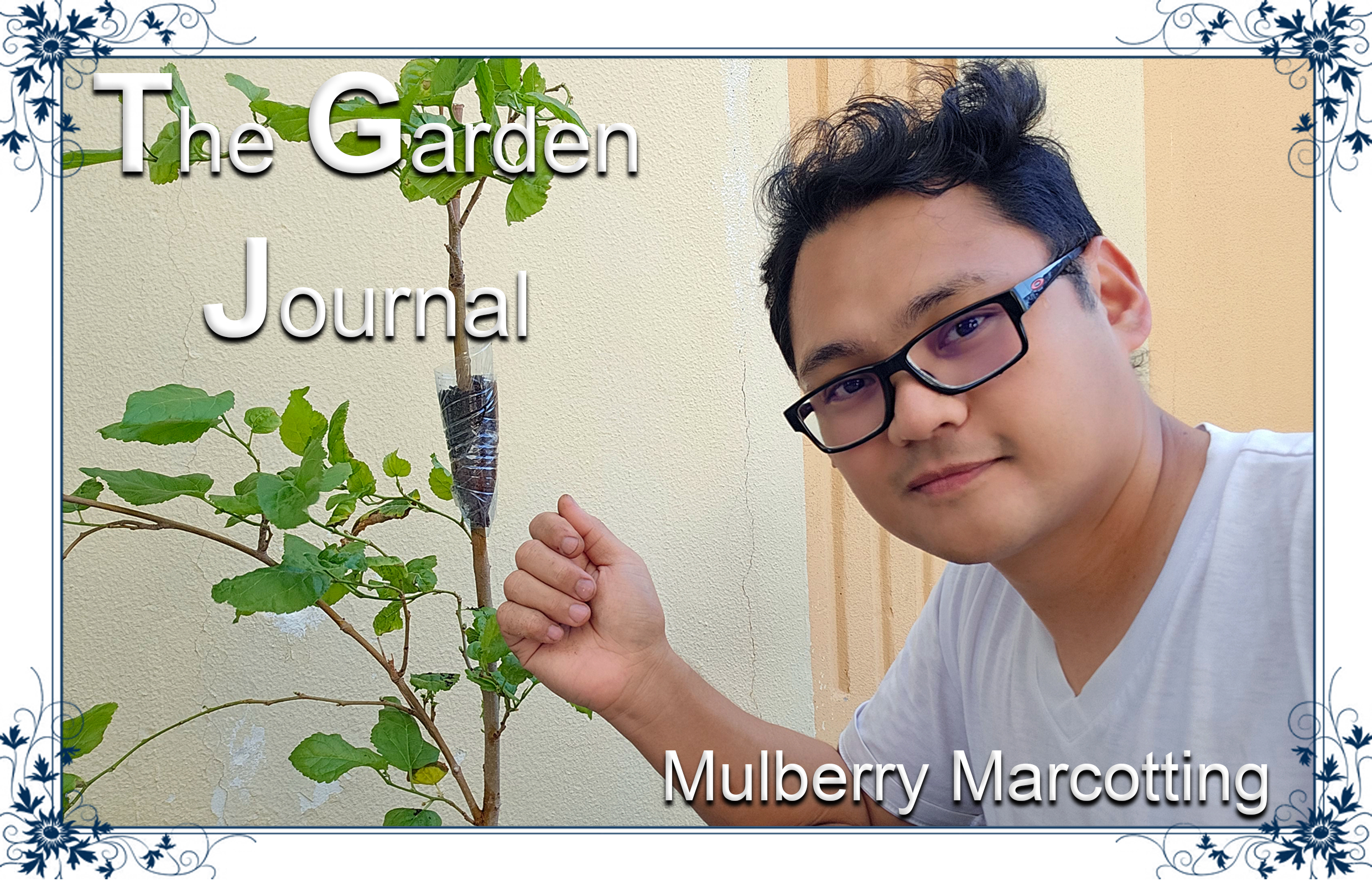Last week, I began air-layering known as "Marcotting" the Mulberry tree, and it took less than a minute to complete. This method is considered safer than grafting since grafting may not always succeed. Marcotting, on the other hand, involves rooting and propagation and can be performed on various types of plants.

In this marcotting method, it's crucial to prevent the packed soil from drying out. To ensure the area where the root will emerge remains moist, I've chosen to mix it with coconut husk.

In plant marcotting, it's essential to remove the first layer of the plant's skin. Afterward, you can wrap it with plastic or use a plastic bottle filled with soil or coconut husk, as I did.
I'm still uncertain about the exact duration for rooting, so I'm closely monitoring and counting the passing days to determine it.

I used a plastic water bottle for the marcotting process, securing it with Scotch tape to seal the bottle. Of course, the top is left open for watering.


I attempted my first marcotting when I was 11 years old, and I did it on a rose using just a plastic bag and mud. It proved effective, especially since in the Philippines, I watered it daily every morning.


As you can see in the picture, I used coconut husk mixed with a small amount of soil. The soil itself is a combination of crushed eggshells and crushed dry leaves, as the soil in this area is mostly sand.

By the way, one method to straighten the branch of this tree variety is to use a sturdy bamboo stick and gently tie the branch until it matures enough to support itself, at which point the bamboo stick can be removed.